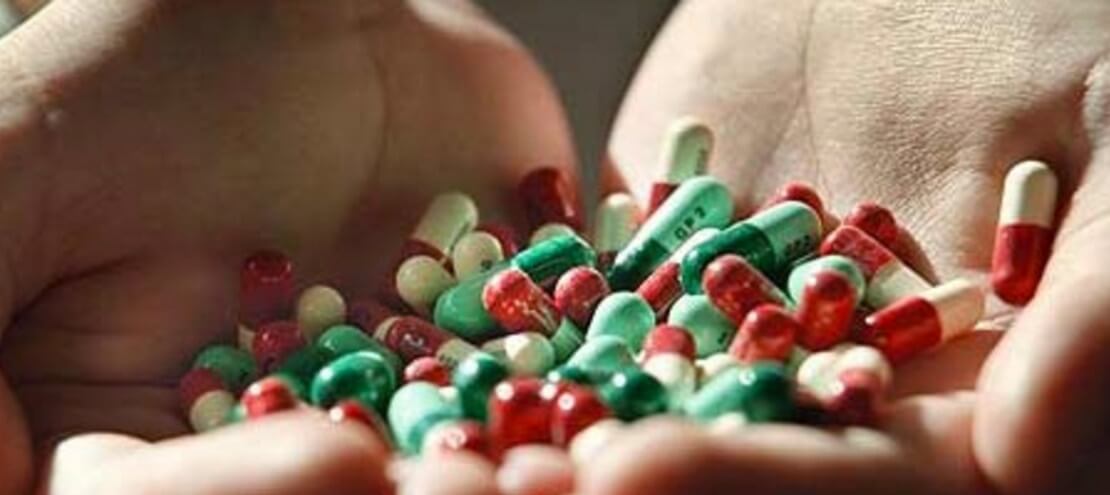
These days, many of us carry a catalogue of potential catastrophes around in our heads. Terrorist attack, nuclear proliferation, rising sea levels and earthquake all sit just beneath the surface of our minds, giving us a chronic case of low-level heebie jeebies. As if you didn’t have enough to worry about, here’s another threat to add to the list: antibiotic resistance, the potential effects of which could be even worse than those of its companion entries.
Try these outcomes on for size:
- The risk of dying from simple infections and minor injuries that have been treatable for decades
- The inability to carry out transplants, chemotherapy, Caesarian sections and other medical procedures that are now routine due to the risk of infection
- Infectious disease pandemics that will dwarf the recent Ebola outbreak in significance
In short, antibiotic resistance threatens to turn the clock back to the medical dark ages – unless we take action. But unlike the threats in the catalog of catastrophes that we are powerless to do much about, there are steps that we can take to help conserve antibiotics. We can also take action as a nation: last week, President Obama convened the White House Forum on Antibiotic Stewardship to find ways to ensure the responsible use of antibiotics, up to half of which are not needed or are inappropriately used. Representatives of hospitals, food producers, medical organizations and restaurant chains responded with pledges to take steps to conserve antibiotics. Similar initiatives have been implemented by other governments and organizations, including British Prime Minister David Cameron, German Chancellor Angela Merkel, the CDC and the World Health Organization.
The problem is this: the pharmaceutical industry has produced three generations of antibiotics over the past 60 years – natural penicillins, synthetic penicillins and carbapenems, with bacteria becoming resistant to each in turn. Today, the average time to resistance for a new antibiotic is less than a year. Pharmaceutical companies are no longer developing new classes of antibiotics because of the enormous cost – the new drugs that are being introduced are basically new versions of already-existing drugs — leaving us with the prospect of an empty antibiotic arsenal. Infections with drug-resistant bacteria are becoming increasingly common, sickening about two million Americans and claiming about 23,000 American lives annually, according to the Centers for Disease Control and Prevention (CDC). The cost of antibiotic resistance to the U.S. economy is $35 billion, including about $20 billion in direct healthcare costs.
While attention has recently been focused on the highly unlikely threat of Ebola taking hold in Europe or the United States, we are ignoring the much more genuine threat of antibiotic resistance. Health authorities agree that urgent, coordinated action by a wide range of stakeholders around the world is required. The United States is working on a comprehensive plan to deal with this threat. While time will tell if the measures implemented will be effective, the White House forum is a step in the right direction. In the meanwhile, however, there are steps individuals can take right now to promote antibiotic stewardship. These involve restricting the use of antibiotics — the greater the exposure to antibiotics, the greater the chance bacteria will develop resistances — and using them properly.
1. Practice proper hygiene — Hygiene practices that were common in our grandparents’ era, such as washing your hands before eating, have fallen by the wayside. Handwashing is one of the most important means of preventing the spread of infection. Wash your hands often or use an alcohol-based hand sanitizer; also, don’t share personal items such as towels or razors. Use antibacterial products sparingly and only when appropriate. According to the CDC, the everyday use of antibacterial soap, which has been linked to bacterial resistance, confers no added health benefit.
2. Conserve antibiotics by preventing illness in the first place. Maintain a healthy lifestyle — including proper diet, exercise and hygiene. An important area to pay attention to is food. Cook meat thoroughly and use hygienic food-handling practices to prevent food-borne illnesses. About 48 million people get food poisoning each year, and some of the bacteria in raw meat can be deadly. Last year, the FDA announced drug-resistant bacterial contamination in 81 percent of ground turkey, 69 percent of pork chops, 55 percent of ground beef, and 39 percent of chicken sampled in grocery stores.
3. Don’t take antibiotics for viral infections like the flu. While antibiotics are effective against bacterial infections such as strep throat and some types of pneumonia, diarrheal diseases and ear infections, they aren’t effective against the viruses that cause colds or flu. Don’t insist on an antibiotic if your doctor advises otherwise. Also, if you are prescribed an antibiotic, discuss the decision with your doctor to confirm that the infection is bacterial in nature: while patients are often guilty of asking for antibiotics when they aren’t needed, doctors can also be guilty of overprescribing them.
4. If antibiotics are needed, take the full course exactly as directed. If treatment stops too soon, the bacteria that survive can grow and multiply, leading to reinfection. These drug-resistant strains may even spread to others. Complete the prescribed course of treatment even if you are feeling better. Also, don’t take an antibiotic that has been prescribed for someone else. Since the drug may not be appropriate for your illness, taking the wrong medicine not only delays treatment, it also may allow drug-resistant bacteria to multiply. Similarly, don’t share antibiotics with others or save a prescription for a future illness.